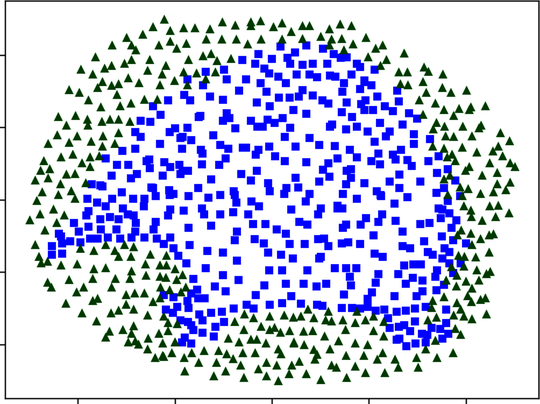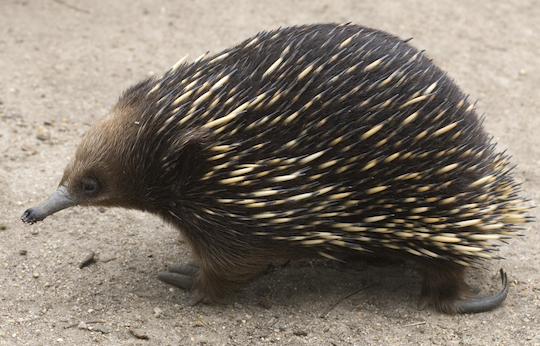The Echidna Dataset
Do you remember the concept of a decision boundary, introduced back in Tracing a Boundary? Soon enough, you’ll see how a neural network’s decision boundary changes as you add a fourth layer. For that purpose, I prepared a dataset that’s twisty, but also easy to visualize. Here it is:

This dataset has two input variables and two classes, visualized here as squares and triangles. If you happen to be a fan of marsupials, you might notice that the dataset happens to be shaped like an echidna:[22]

My wife and I still remember an unexpected encounter with a wild echidna on a trip to Australia. Let’s not mince words: echidnas are cool.
I saved the Echidna dataset to a file named echidna.txt. I also wrote an echidna.py file that does the same job as the mnist.py file from earlier chapters. It loads the data and the labels into two variables named X and Y, and also splits it into training, validation, and test sets:
| => | import echidna as data |
| => | data.X.shape |
| <= | (855, 2) |
| => | data.X[0:3] |
| <= | array([[ 0.01653543, 0.42533333], |
| | [ 0.14566929, -0.332 ], |
| | [ 0.19133858, -0.47866667]]) |
| => | data.Y[0:3] |
| <= | array([[0], |
| | [1], |
| | [1]]) |
| => | data.X_train.shape |
| <= | (285, 2) |
| => | data.Y_train.shape |
| <= | (285, 1) |
We won’t use the test set in this chapter, but the training and validation sets will become useful soon.
Now let’s build a neural network that learns the Echidna dataset.